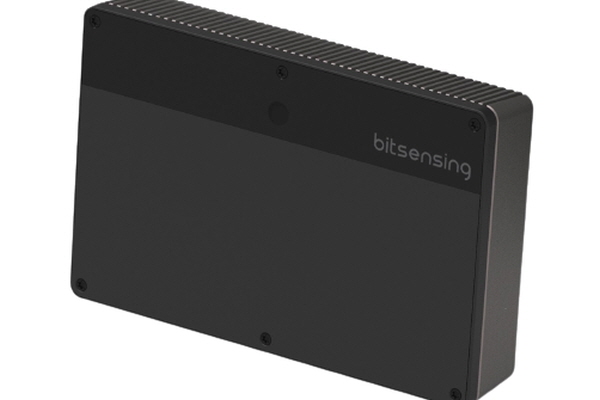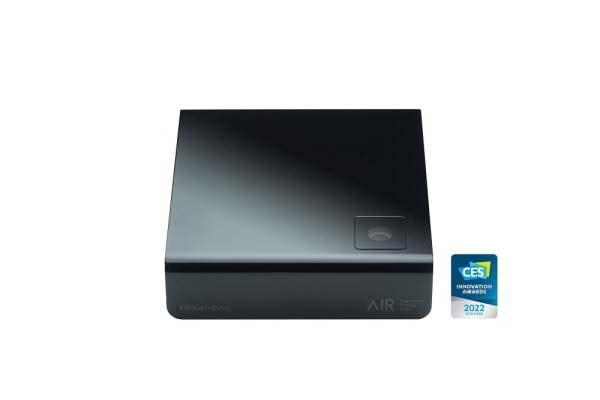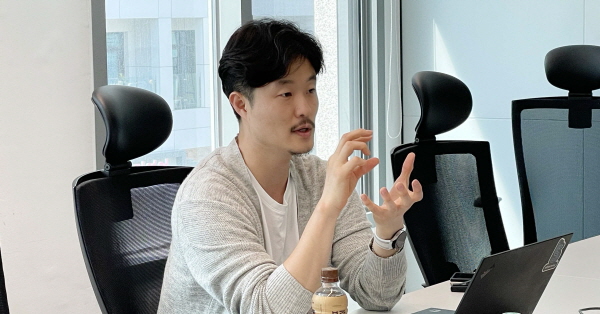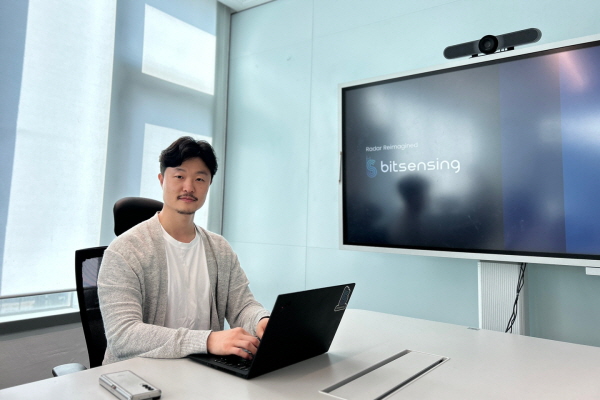[편집자주]CES 2022에서 레이더 기술을 바탕으로 혁신상을 수상한 바 있는 비트센싱은 ‘2023년 떠오르는 탑 자율주행차 기술 스타트업’에 선정되기도 했다. 지난 6월 1일 코엑스에서 개최된 넥스트라이즈(NextRise) 2023에 참여한 비트센싱은 Future Tech 부문에 부스를 마련하고 세계적으로 인정받는 레이더 기술을 선보여 눈길을 끌었다. 비트센싱은 자율주행, 스마트시티뿐만 아니라 웰니스 사업에서도 레이더 기술을 접목시키며 기존 레이더의 이미지를 탈피하는 데 앞장서고 있다. 이에 본지는 이재은 비트센싱 대표를 만나 레이더에 혁신을 불어넣고 있는 비트센싱의 기술과 레이더 시장의 전망에 대해 물었다.
▲이재은 비트센싱 대표
■ 비트센싱에 대한 소개와 기술력에 대해 이야기 부탁드린다
비트센싱은 레이더 테크 스타트업이다.
날씨에 영향을 받지 않는 레이더의 안정적인 센싱을 보장한다. 안개, 우천, 황사 등의 환경에도 레이더는 항상 동일한 성능을 보인다는 것이 중요하다.
한계가 명확한 카메라와 상호 보완적인 관계이며 레이더와 카메라의 조합의 최적의 센서 조합이라고 생각한다.
비트센싱은 인프라 부문에서 레이더와 카메라로 이미 센서 퓨전을 하고 있다.
자동차용 같은 경우는 기존에 검증된 카메라 솔루션과 더불어 레이더를 조합해 보다 뛰어난 센서 퓨전을 위해 서포트를 하고 있다.
■ 차량에 탑재되는 레이더와 인프라에 탑재되는 레이더의 차이는 무엇인가
주파수 법규상으로도 주파수를 분리해서 써야 되는 게 있으며 자동차에는 더 정밀한 요구사항들이 있다.
도로를 다니면서 물체 구분을 원거리까지 해야 하는 등 점점 더 높은 사양을 요구하고 있다.
주파수 대역은 점점 높아지는 방향으로 가고 있으며 주파수가 높아질수록 파장이 짧아지기 때문에 센서는 작아진다.
장착 위치에 대한 자율성 등으로 인해 자동차에는 파장이 작아질수록 유리하다.
센서 수가 증가하고 있기에 어디에 장착해야 할지 고객들과 자동차 회사들 모두 고민이 많다.
자율주행을 위한 센서는 고주파수 대역에 넓은 대역폭을 사용하고 인프라의 경우는 고정식이다.
고정식에다가 주파수 대역이 24GHz 대역 ISM band를 쓰고 있는데 원거리를 보는 건 사실 거리상 스팩은 비슷하다.
비트센싱의 차별점은 인프라용 레이더는 카메라까지 센서 퓨전을 직접 하기 때문에 레이더만으로 할 수 없는 작업도 한다는 것이다.
센서가 없는 차량들도 데이터를 바탕으로 더 안전한 주행을 할 수 있고, 교통체증과 같은 상황에서 자유로울 수 있도록 도시 전체적인 관점에서 접근한다.
인프라에서 준비가 돼야 이 공간에서부터 자율주행이 시작이 될 것이라 생각했기에 인프라용 레이더를 먼저 개발했고, 자율주행 레이더를 그 다음으로 개발하게 되었다.
자율주행 레벨 2, 2.5에서도 고사양의 레이더를 원하고 있어 자동차용 레이더에 비트센싱의 기술이 시장에 더 빨리 적용이 될 수 있는 기반이 왔다.
■ 비트센싱은 8개 차선에서 320km로 달리는 256대의 차량을 식별, 감지할 수 있다고 보았는데 처리되는 데이터량도 어마어마할 것 같다
카메라 데이터도 포함되어 있기 때문에 내부적으로 처리하는 데이터량은 상당히 많다.
CCTV 카메라처럼 모든 데이터를 서버로 올리면 통신 비용도 어마어마하다.
비트센싱은 엣지 디바이스에서 모든 처리가 끝나고 아웃풋을 넘겨주는 컨셉을 추구하고 있다.
엄청난 데이터가 중 차량별 위치 속도, 차종 구분 등에 대한 결과들만 도출하기 때문에 실제로 쌓이는 데이터는 많지 않으며, 100ms마다 모든 처리가 일어난다.
■ 비트센싱의 C-ITS 솔루션인 TIMOS로 추진 중인 사업이 있는가
대구광역시에서 이를 활용한 스마트 횡단보도 사업이 진행되고 있고, 아직 도시를 밝힐 수는 없으나 교차로에 레이더 4개를 설치해 교차로를 지나가는 모든 차량들에 대한 정보를 한꺼번에 저장을 하고 이에 맞춰 신호등 제어까지 할 수 있도록 데이터를 제공할 예정이다.

▲비트센싱 Smart Traffic Infrastructure Solution TIMOS
물리적으로 떨어져 있는 센서들의 싱크를 맞추는 기술을 지난해부터 개발해 완료를 했기에 가능하다.
이러한 솔루션을 바탕으로 멀티 센서와 싱글 센서를 유기적으로 조합한 교차로가 늘어나면 그 지역은 진정한 스마트 시티가 될 것이다.
더불어 통신 방식은 선택하지 않고 센싱하는 부분만 담당하기에 국가와 지역마다 다른 통신 방식에 알맞게 적용시킬 수 있다는 것이 비트센싱의 장점 중 하나다.
이런 장점을 바탕으로 현재 국내에서도 사업을 이미 하고 있고 이탈리아, 태국과도 논의하고 있다.
■ 보다 발전된 자율협력주행과 자율주행으로 나아가기 위해 연구해야 한다고 생각하는 부분은 어떤 것이 있나
자동차에서는 이미징 레이더가 더 발전을 해야 될 것으로 보이며 이는 레이더가 물체 구분을 하는 단계가 시작이 된다는 의미를 갖는다.
이 시장이 성숙되면 이미징 레이더 기반 자율주행 시대가 열릴 것으로 예상된다.

▲비트센싱 4D 이미징 레이더 솔루션
또한 기존의 차량들이 다 자율주행차로 바뀌지는 않기에 전체적으로 교통 관제를 더 효율적으로 할 수 있는 시스템이 필요하다.
비트센싱은 인프라용 레이더로 전체 도로에 트래픽 모니터링을 해야 된다고 주장했었으며, 어느 정도 받아들여지고 있다.
지금까지 없었던 데이터를 수집하고, 제공함에 따라 이를 기반으로 신호등 제어를 한다면 교통 체증, 사고 등과 더불어 배기가스, 에너지 절약 등 환경문제들도 전체적으로 관리할 수 있을 것으로 기대된다.
■ 지난 넥스트라이즈 행사에서 비트센싱은 웰니스 레이더 솔루션도 선보였는데 이에 대해 자세한 이야기를 듣고 싶다
카메라를 전혀 사용하지 않는 웰니스 솔루션이다.
레이더 데이터로 수면 중 호흡 패턴을 정확하게 파악할 수 있다.
.jpg) ▲
▲비트센싱 웰니스 솔루션
비트센싱은 수면 중 호흡 분석을 오랫동안 연구를 했고, 솔루션이 어느 정도 수면 분석을 할 수 있는 준비가 된 상태다.
현재 내부적으로 베타 테스트도 하고 있고, 2023년에는 공개적으로 베타 테스트를 진행을 할 것이다.
병원과 수면다원 검사실에서 데이터를 꾸준히 모아왔고, 여기서 그치지 않고 더 많은 데이터를 확보하려고 한다.
지금까지의 노력으로 어느 정도 신뢰성을 갖춰 나가고 있으며 수면 분석에 대해 정확도를 점점 올리고 있다.
수면 분석을 더 구체적으로 이야기하면 수면 중에 호흡 문제, 코골이와 관련된 폐쇄성 무호흡, 다른 병증에 관련된 중추성 무호흡과 같은 것들이 호흡 패턴으로 많이 나온다.
이러한 것들을 분석한 뒤 구분해서 슬립 스코어를 제공하고 매일 데이터가 누적되기 때문에 건강 상태가 모니터링이 되며 이를 바탕으로 건강에 적신호가 있는지 확인하고 내원을 가이드하는 하려 한다.
■ 오토모티브 시장과 웰니스 시장에서의 레이더의 역할과 전망은 어떠한가
오토모티브 레이더 같은 경우는 이제 기존 레이더에서 한 단계 진보된 이미징 레이더 시장이 열리고 있다.
이미징 레이더 시장이 본격적인 성장에 돌입한다는 소식들이 속속 들리고 있다.
기존에 없던 레이더 제품이기 때문에 10년 전 라이다 시장과 같은 분위기다.
이미징 레이더 시장은 성장할 가능성이 매우 높고, 많은 관심을 받을 수 있을 것으로 생각한다.
 ▲이재은 비트센싱 대표
▲이재은 비트센싱 대표
웰니스 경우는 사실 생각지도 못했던 시장이다.
레이더로 공략할 수 있을지에 대한 의문이 있었으나 시작을 해보니 할 수 있는 것들이 충분히 많고, 사람과 맞닿아 있어야 한다는 접촉식 문제와 같은 기존 디바이스들의 한계를 보완할 수 있다고 판단했다.
예를 들면, 잠을 잘 때 충전을 해야 하기에 벗어 놓는 웨어러블 기기를 완벽하게 대체할 수 있다.
벗어 놓은 상황에서도 끊기는 데이터 없이 지속적으로 분석할 수 있다는 것이 비트센싱의 장점으로 작용한다.
나아가 이러한 장점은 웨어러블 기기 제품을 만드는 기업과 서로 협업을 할 수 있는 가능성도 있으며 생각지도 못한 다른 큰 길들이 생기지 않을까 하는 기대감도 있다.
■ e4ds 독자들에게 한 말씀 부탁드립니다
Radar Reimagined. 비트센싱의 태그라인이다.
이에 맞게 기존 레이더의 이미지를 깨고 생활 전반에서 레이더 센싱으로 할 수 있는 문제들을 계속 풀어나가도록 하겠다.
이처럼 비트센싱은 많은 사람들이 레이더 기술을 통해 혜택을 볼 수 있도록 노력을 하고 있으니까, 레이더에 대한 많은 관심과 응원을 부탁드린다.
감사합니다.



.jpg)
